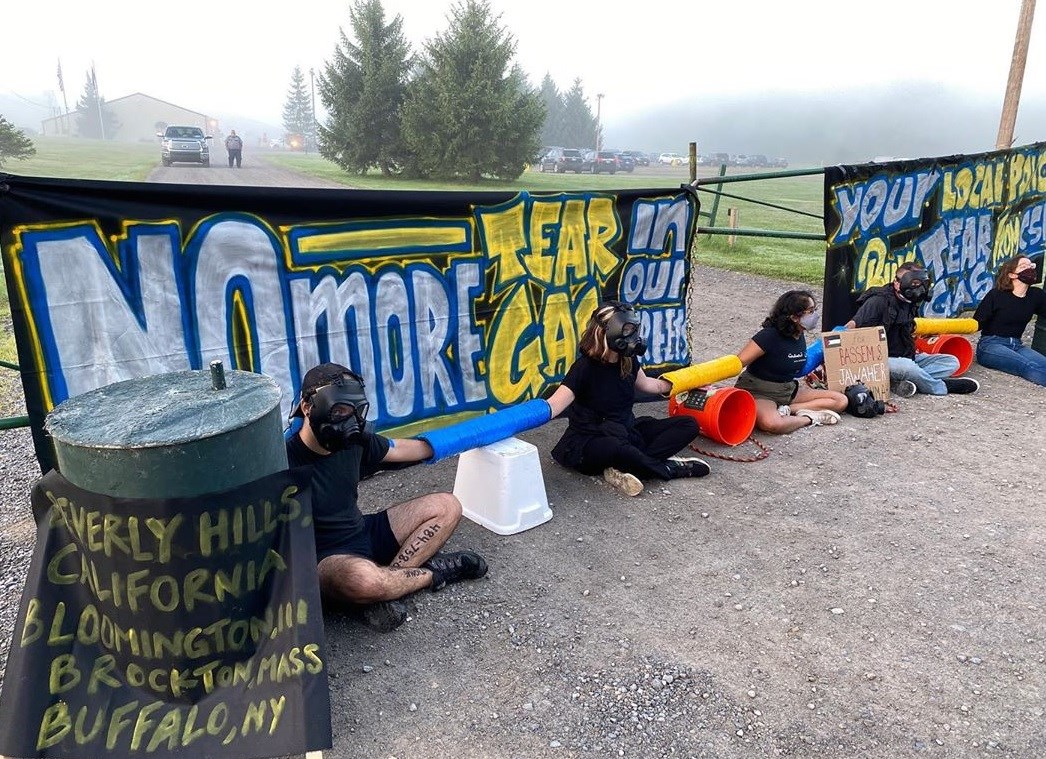
Residents filed appeals and fought back in court, but in 2015, the Supreme Court of Israel rejected a petition to prevent demolition of the village. The state has marked Umm al-Hiran as the site of a future Jewish development to be called Hiran, a project that necessitates the demolition of the entire village. Half of the village was briefly granted recognition in 2008, but the decision was reversed two years later. Like Wadi an-Na’am, Umm al-Hiran was established in the 1950s by order of the Israeli military governor as part of a state-sanctioned effort to relocate and concentrate the Bedouin. I also visited Umm al-Hiran, an unrecognized village on the verge of demolition. In 2015 the Association for Civil Rights in Israel presented two alternative options, both of which would allow the villagers to maintain their way of life, but the relocation will move forward as originally proposed.

The villagers oppose this plan because it would destroy their agrarian lifestyle. Israel recently announced its intention to relocate the residents of Wadi an-Na’am to the nearby town of Segev Shalom. Adalah, a human rights and legal organization, currently has three open cases regarding elementary schools in Wadi an-Na’am that lack electricity. People in the villages depend instead on an inconsistent combination of solar panels and generators. This plant generates electricity for Be’er Sheva and surrounding localities, but not for Wadi an-Na’am or the 45 other unrecognized villages like it. The last accident killed two children aged 8 and 10.Īn electric power plant is clearly visible from the village. Unexploded shells are often left behind from these exercises. The village is also surrounded by military firing zones, where the Israeli Defense Forces carry out military drills and trainings using live ammunition. Since its establishment, the facility has experienced frequent accidents, fires, explosions, and leaks, resulting in birth defects and long-term health problems in the Bedouin community. In the 1970s, Israel built Neot Hovav, the country’s primary toxic waste disposal facility, in Wadi an-Na’am. It was established in the 1950s by internally displaced Bedouins from surrounding villages who’d been forcibly removed from their homes and lands, but it’s never been officially recognized. The largest of the unrecognized villages is Wadi an-Na’am. Less than 5 miles away are unrecognized villages where people live in tents and tin shacks. It is a thriving college town, a growing tech hub, and interestingly, the chess capital of the world. Originally founded in 4,000 BCE, Be’er Sheva has been at times a Bedouin encampment, part of the Ottoman Empire, and now, the fourth most populous metropolitan center in Israel. It is home to 205,000 people, about 10 percent of whom are Palestinian citizens of Israel.

I visited three villages to understand the effect of occupation.īe’er Sheva is the largest city in the Negev desert. Today, the unrecognized villages of the Negev desert have the highest unemployment and poverty rates in Israel. The Bedouin are Israeli citizens, but because their villages aren’t formally recognized by the state, they have no access to state services including water, electricity, telephones, sewage systems, and roads. Of the Bedouins still living in the Negev, half live in government-designated towns and cities, much like Native reservations in the United States, and the other half live in unrecognized villages. Nearly 90 percent fled during the Nakba of 1948. 11,000 Bedouins remained, a population which has now grown to over 200,000. While all of these statements are true, Palestinians insist that occupation still exists inside the state of Israel, and nowhere is that fact more apparent than in the unrecognized Bedouin villages of the Negev desert.īefore the creation of modern Israel, the Negev desert, which constitutes the southern half of the country, was almost entirely populated by Arab Bedouins. There are Arab members of parliament, the Arab population in Israel has been growing steadily for decades, and the Arab cultural scene is thriving in places like Haifa.
Aniqa raihan full#
It is commonly believed that Palestinian citizens of Israel - officially known as Arab Israelis - enjoy full equality in the Jewish State. Most people agree that the West Bank and Gaza Strip have been occupied since 1967. Much less thought and literature is dedicated to the treatment of Palestinians living inside modern-day Israel proper. I decided to head over there and see for myself. It’s no secret that there is an occupation happening in and around Israel.


 0 kommentar(er)
0 kommentar(er)
